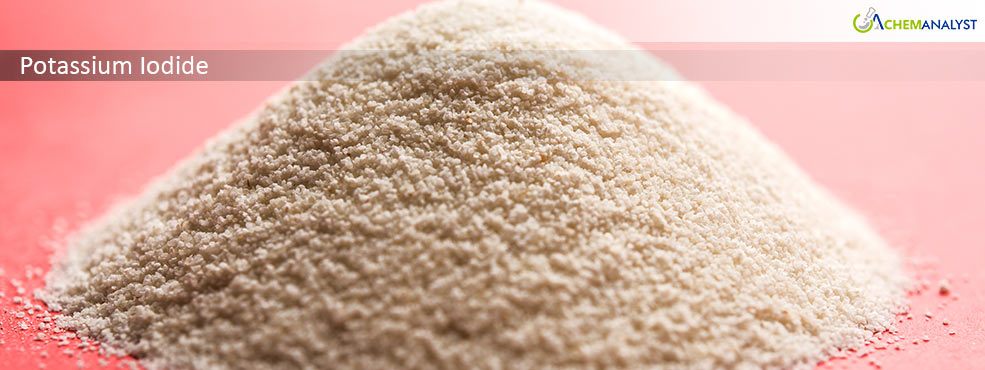Welcome To ChemAnalyst

Asian Potassium Iodide prices fell slightly in the first half of May 2025 after rising in April. The decline was mainly due to improving supply and weakening demand from key downstream sectors. After the April increase, which was driven by strong export demand, high input costs and low domestic inventories, market sentiment shifted as external orders tapered and production capacities normalized.
In China, the leading producer of Potassium Iodide in the region, April had seen a notable surge in export activity due to anticipated tariff hikes by the United States. According to ChemAnalyst, Manufacturers accelerated shipments early in the month, resulting in tighter inventories and upward pressure on prices. However, with these trade measures now implemented and many foreign orders already fulfilled, outbound volumes declined in early May. The appreciation of the Chinese yuan against the US dollar also influenced pricing decisions, while a broader slowdown in industrial output, reflected by a drop in the Purchasing Managers Index, dampened domestic production and demand.
India experienced a similar trajectory. The firm pricing trend for Potassium Iodide in April was supported by high caustic potash prices, strong demand from overseas buyers, and robust manufacturing activity across pharmaceutical and nutraceutical sectors. By May, however, export interest began to ease. Buyers adjusted their procurement strategies as inventories stabilized and pricing expectations softened. Despite strong domestic indicators such as a ten month high in the Manufacturing Purchasing Managers Index, international demand softened, prompting Indian producers to reassess their pricing outlooks.
On the supply side, China and India both saw better operating rates and steady feedstock in May. The stable caustic potash pricing and higher plant operating rates led to a slow increase in production. As Potassium Iodide production increased, inventory in the region recovered and the previous supply constraints eased and put downward pressure on prices.
Meanwhile, demand from key end use industries like pharmaceuticals was cautious. Procurement from these sectors slowed down as buyers wanted to manage their existing stocks rather than committing to new volumes. Reduced freight costs took the urgency out of international buying and many buyers delayed their orders hoping for better pricing later in the month.
According to a market expert, prices expected to fall slightly in the second half of May in Asia. This is due to lower export volumes and increasing pressure on Potassium Iodide prices from reduced demand from major downstream segments such as pharmaceuticals. Additionally, the continued increase in production capacity for Potassium Iodide, supported by stable feedstock and better operational performance, will create an oversupplied market that will lead to further price declines.
We use cookies to deliver the best possible experience on our website. To learn more, visit our Privacy Policy. By continuing to use this site or by closing this box, you consent to our use of cookies. More info.
